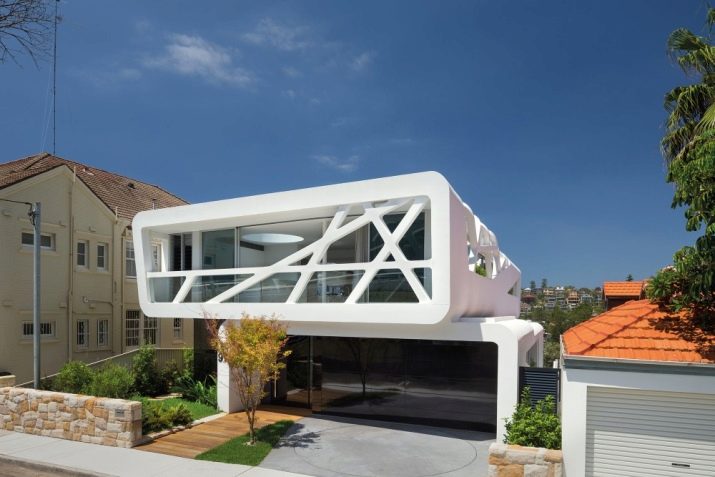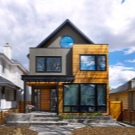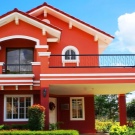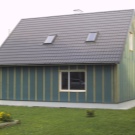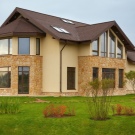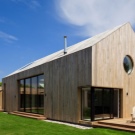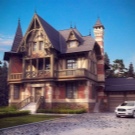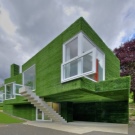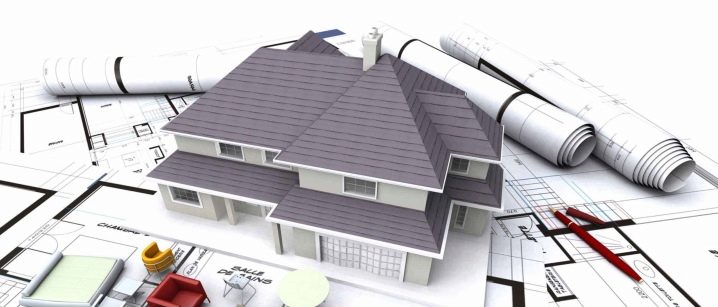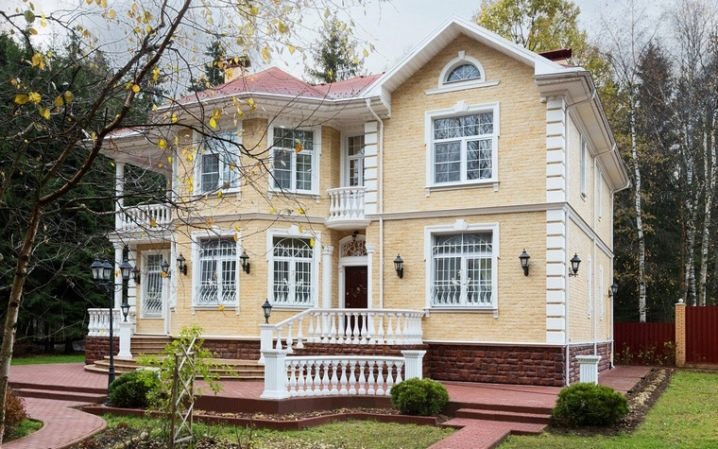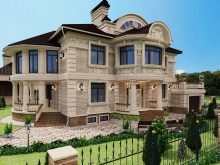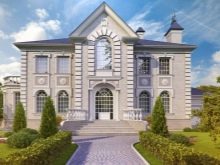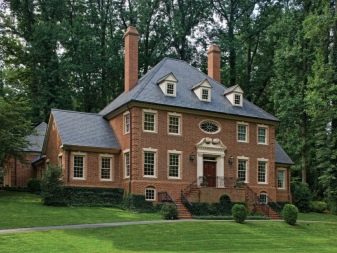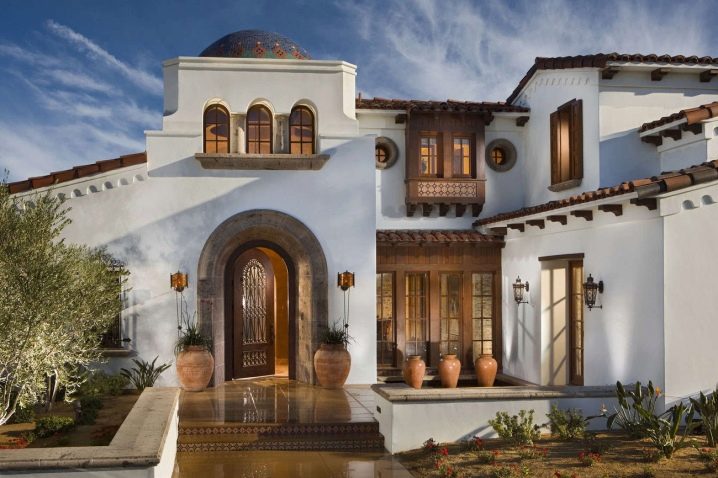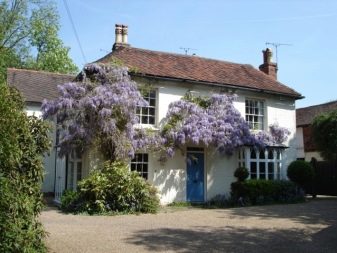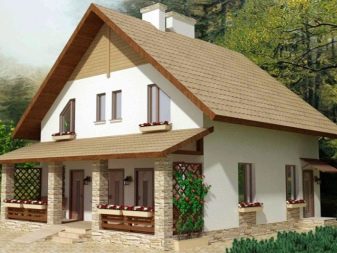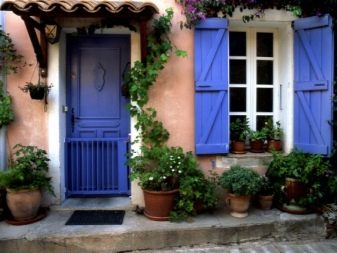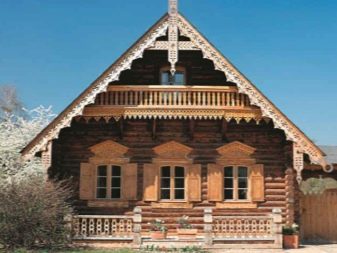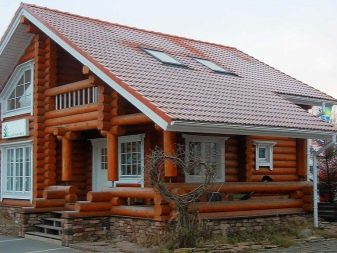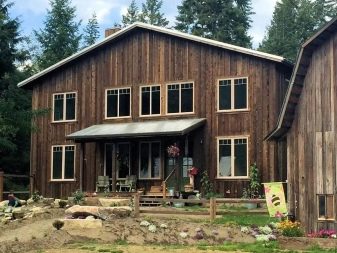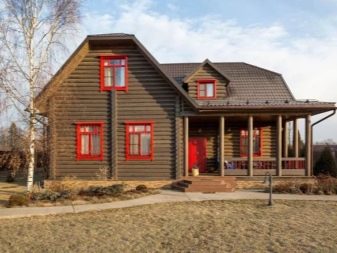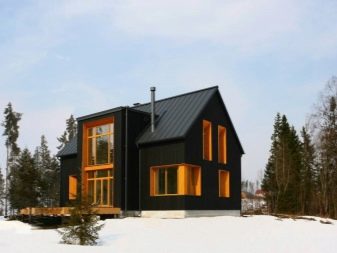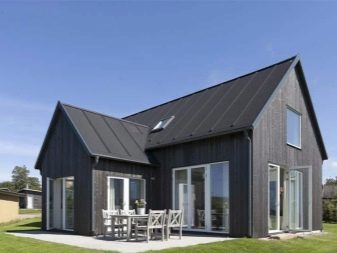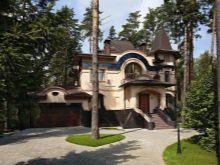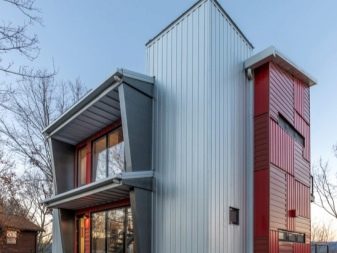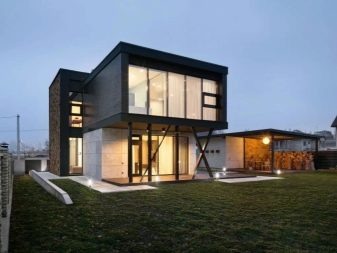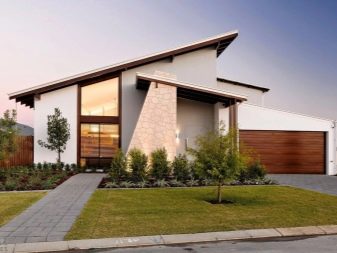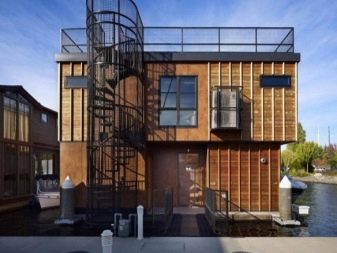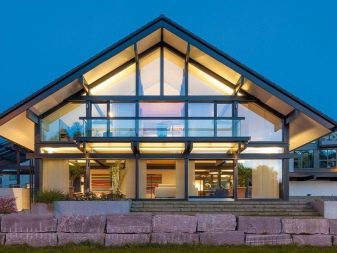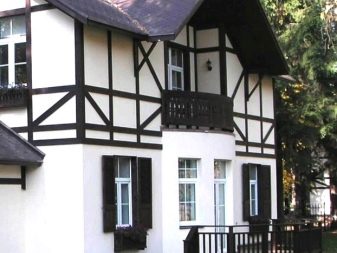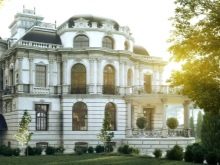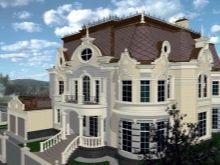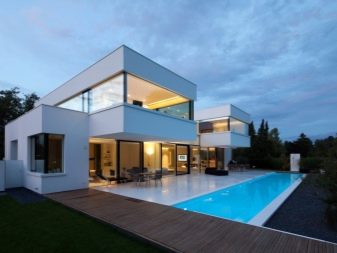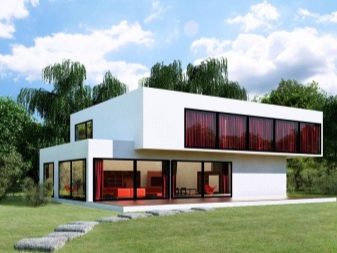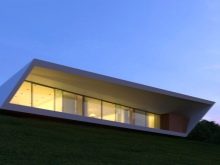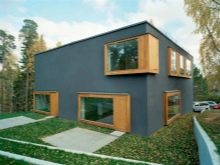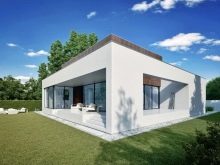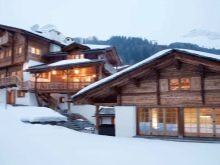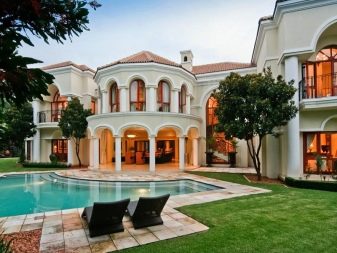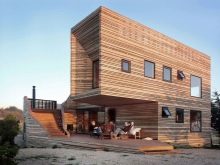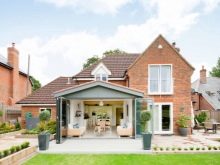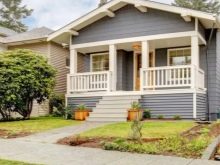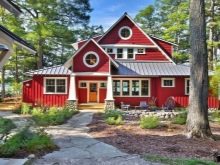Facades of houses in various fashionable styles
The choice of stylistic features of the architecture and decoration of the facade of the house is a very important decision and requiring special attention. The appearance of the house can tell a lot about its owner. In addition, a residential private house is a building not only for decades, but often for centuries. That is why when creating a project for the future at home, try to adhere to the time-tested, well-established stylistic foundations.
Variety of options
Different countries, cities and continents are ready to offer architectural styles that have won universal love and popularity in their area, and the development of tourism has allowed the principles of these styles to be reflected in various parts of the world.
In addition to the territorial classification, it is possible to identify features that are due to fashion trends of a particular period of time.These styles include all palace: baroque, rococo, gothic, classicism and others. Replacing one another, each left a powerful mark on European culture, which means it continues to be relevant in our time.
To create an exterior peculiar to the east or west, of one or another era in our time is not difficult. Modern technology and the abundance of finishing materials allows us to expand the horizons and build a house that will meet all requests, both externally and functionally.
Design Ideas
To better navigate the variety of options and competently develop a project for the future home, to choose finishing materials, it is worth exploring the main features and elements of each of the styles.
Classical
Classic at all times remains one of the most advantageous options for the design of the facade. The house in a classic style looks solid, thoroughly and fundamentally. The owners of such country estates are distinguished by exquisite taste and wealth, as the classic suggests the scale of the building.
The main features of the style:
- Clarity and symmetry of the composition;
- Decorative elements restrained,often the decoration is reflected in the post-and-beam (columns, pilasters) system in the form of architectural orders, there are decorations in the form of bas-reliefs with medallions, arches, window cornices;
- There is often a mezzanine;
- The rule of the golden section is used, all values (height and width) have an exemplary ratio, the proportions of the house are harmonious and perfect;
- The color palette is pastel, light, close to natural and natural colors;
- Finishing materials - plaster, marble, roof for the roof - tiles.
English classics are Georgian houses. The forms and proportions of houses correspond to the principles of the classical style, but the main difference is the finishing of the facade.
Houses in pure English style are laid out of red brick, and only the ornament is plastered and made in white.
Oriental
The architecture of the east is very multifaceted. Since the concept of "east" is very broad, it is worth first of all paying attention to the Chinese and Japanese architecture, and then to study the peculiarities of Islamic style.
The most striking example of Chinese and Japanese architecture are pagodas. The form of a Buddhist temple can be taken as a basis and make the roof in this style. It is not necessary to attach to cyclical peculiar to pagoda.Curved roof slopes are a great solution for a European country house in an oriental style.
Combinations of green and bright red elements are characteristic of the architecture of China and Japan.
To imagine what the Islamic style is, it is worth remembering the Scheherazade fairy tales from “A Thousand and One Nights”.
Key Features:
- Dome roof;
- Tower architectural elements in the form of minarets;
- The presence of a spacious internal open courtyard, along the perimeter of which an aqueduct and columns are installed;
- The presence of honed arches;
- Elements of stained glass;
- Using bright colors for painting the facade with oriental ornaments or plastering external walls and painting them white.
Provence
This style is named after a small province in the south of France. Cozy and low, often two-story, houses look simple, but elegant and very cute, home-style.
This is achieved due to the peculiarities of the style:
- Only natural materials are used to build a house;
- Elements of plastic or metal will never be suitable for styling exterior decorations; glass is used only for glazing windows;
- The houses are mainly made of stone, which is the main tool for finishing the facade, sometimes there are plastered buildings;
- Small windows must have a wooden platband and shutters, painted in the main colors of Provence: delicate blue, purple and green.
In order for such a house on your site to look harmoniously, include fresh flowers in the external decoration, which will be located on the outside of the windows or plant climbing flowers along the facade. Such a natural decor will transform the building, make you and your guests believe that you are suddenly transported to the south of France.
Country music
The word "country" in the English language has a double meaning and, on the one hand, translates as "village", and on the other, as "country". Therefore, this style in each country has its own traditional features peculiar to the culture and history of this country.
For example, Russian country is a classic log cabin, with carved platbands, shutters, a pediment and porch balusters. Such a variant of the house is suitable for true connoisseurs of traditions. Thanks to the spread of downshifting, it has recently become very popular for country houses withthe purpose of the weekend and rest from the city bustle and noise.
American country is devoid of elegant and carved elements. Most of all it corresponds to such houses that can be found on a ranch in the southern states of America. These are spacious one-story or two-story buildings from natural materials, concise and cozy. An alternative to a ranch can be a house made in the style of a saloon. This theme is suitable for country houses or cottages.
The Bavarian version of country is usually a two-story house with an attic, having wooden elements and carvings, but most of the external walls are plastered and often painted with national motifs.
Thus, the main distinctive features of the country style are:
- Use of natural materials: wood, stone, brick, plaster, plaster;
- Lack of fancy decorations;
- Simple but spacious forms;
Scandinavian
The main features of the style is simplicity, functionality, minimalism, unity with nature. The facades in the Scandinavian style have simple geometry, they do not stand out as luxury, however, they look stylish and impressive. Wood and plaster are commonly used for decoration.A basement room is missing.
The choice of this style is very suitable for houses intended for permanent residence, because such a house seems to dissolve with nature, and the simplicity of the forms will not be able to get bored.
Modern
This style was developed in European countries in 1890-1910. The architecture of buildings designed in the modernist style differs in that the geometry and decoration of the facade can be traced to the maximum rejection of sharp corners and straight lines.
Windows and doors are often made in an arched form, forged staircase and balcony railing used forged elements, semicircular moldings framed doors and windows, the outer walls can be lined with mosaics or painted with floral motifs.
Loft
This architectural style originated in the XX-XXI centuries. It appeared almost by accident, the fact is that in the 40s in New York there was a sharp jump in land prices, which forced the owners of factories and manufactories to leave the industrial premises in the industrial areas of the city and move out of New York. Empty businesses began to attract New York bohemia for its huge spaces, high ceilings, wide and tall windows, as well as the relatively inexpensive cost of renting.
For the artificial creation of the facade in the loft style, you should create a project in which the architecture of the building will be as simple as possible - a tall box with a flat roof.
Keep in mind that the ceilings in this loft are very high, so a two-story house, made in this style, should be above any other.
The finish is usually red brick (in the classic version), but modern materials are also permissible, such as panels for facade cladding. The windows on the aluminum frame will keep the heavy structure in the entire wall, as well as be a feature of style.
Half-timbered houses
German houses fachwerk - the business card of the northern cities of Germany. The appearance of the houses due to the technology on which such buildings are built. The beam frame is made of vertical posts, horizontal and diagonal beams. The classic half-timbered house is plastered white walls and the dark brown color of the framework beams, which gives the facade vividness, dynamism and recognizability, as well as a high gable roof tile.
Modern technologies make it possible to manufacture the framework from metal, and to replace the blind plastered walls with thick and safe glass.This interpretation has breathed new life into German technology, which was born in the XIV century.
Of course, if the site is small and closely borders the neighboring house, transparent walls are not the best idea, but the classic German style with plastered white walls is the embodiment of grace and taste, such a facade deserves attention.
Baroque
Baroque style is one of the palace styles, which is always recognizable for its luxury and deliberate demonstration of wealth.
Features:
- Smooth, curvilinear shapes;
- Pilasters and sculptures on the facade;
- Abundance of stucco;
- Spatial scope and scale of construction.
Baroque style requires considerable investments in the design of the facade, because it was he who was used to create palaces.
High tech
The facades in this style are very laconic, they have strict, but at the same time unusual geometric shapes, and for the decoration are used the latest modern materials - plastic, iron, concrete, glass.
This style is chosen by "advanced", young and modern people who deny the classical foundations in favor of functionality and maximum space without unnecessary details.
For the design of the house in the high-tech style uses the latest engineering developments, because often the shape and appearance of the facade amaze with its originality.
Very often, functional elements such as an elevator, ventilation, or a staircase are taken out.
Minimalism
Close-minded minimalism is often difficult to distinguish from high-tech. The main distinctive feature of the style is a complete rejection of decorative decorations in favor of simple and straight lines, the correct geometry.
Chalet
In a word, the chalet is now called a small house in rural mountainous regions of Switzerland. The word itself means "shepherd's hut", but modern buildings meet the most comfortable conditions with all communications.
The architecture of style is characterized by the presence of strongly protruding eaves. Natural decoration is used - a wooden blockhouse is almost never decorated, but the foundation or plinth can be finished with stone or plastered.
Mediterranean
Mediterranean style is a huge villa with colonnades, columns, arches and tanning beds. Even the design of the facade causes a feeling of relaxation and enjoyment.
Colors are selected light and natural, the outer walls are always plastered have a smooth, matte texture. Such houses are appropriate in the southern areas.
How to choose?
When choosing the style of the facade, consider the factors that will allow you to create a harmonious and beautiful view of a country house:
- House for permanent residence should be functional and as environmentally friendly as possible. Choosing materials for the construction of the facade, do not try to save much. A private house, as a rule, is built for a lifetime, which means that it should be safe for health, “breathing”, not afraid of excessive humidity and temperature changes.
- The project, scale and style of the house should match the size of the site. You should not build a huge palace on a miniature piece of land. Be guided by the principle that a private house is, first of all, unity with nature, and only then a demonstration of wealth and wealth.
- Exterior and interior should overlap. There are styles that are “friendly” with each other and harmoniously combined, but baroque luxury, stucco molding, gilding on the facade will look strange and ridiculous if inside the house furniture and decoration are characteristic of concise and strict minimalism.
- For giving or a country house for the weekend it is better to choose simple styles.that do not require complex work. Garden options are always better to perform in the style of country music.
- Consider the climate of the area where the house will be located, then it will harmoniously fit into the surrounding atmosphere. Eastern or Mediterranean style is suitable for the southern regions, and in cold regions - Russian, Scandinavian, and English.
You can learn about the most unusual house facades from the following video.

